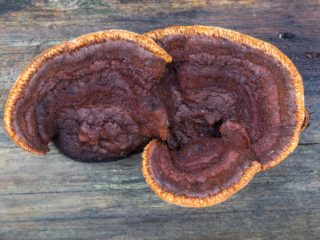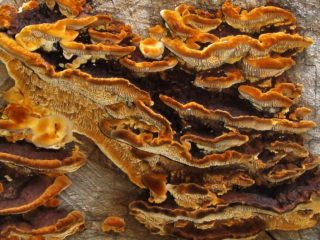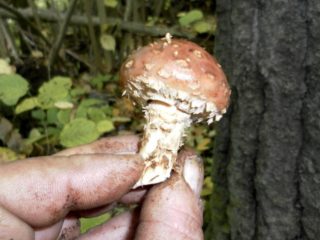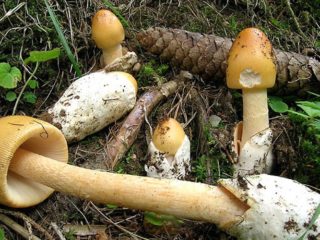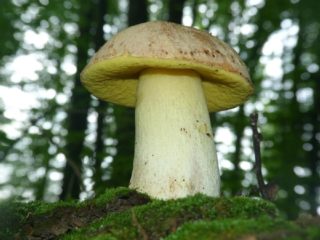Content
Gleophyllum oblong - one of the representatives of the polypore fungi of the Gleophyllaceae family. Despite the fact that it grows everywhere, it is extremely rare. Therefore, in many countries, it is listed in the Red Book. The official name of the species is Gloeophyllum protractum.
What does gleophyllum oblong look like?
Gleophyllum oblong, like many other polypores, has a non-standard structure of the fruiting body. It consists only of an oblong flat and narrow cap, but sometimes triangular-shaped specimens are found. The fruit body is leathery in structure, but it bends well. On the surface, you can see bumps of different sizes and concentric zones. The cap has a characteristic metallic luster, without pubescence. The mushroom grows 10-12 cm long and 1.5-3 cm wide.
The color of the oblong gleophyllum varies from yellow-brown to dirty ocher. The surface may crack when the mushroom ripens. The edge of the cap is lobed, slightly wavy. In color, it can be much darker than the main tone.
The hymenophore of the oblong gleophyllum is tubular. The pores are elongated or rounded with thick walls. Their length reaches 1 cm. In young specimens, the hymenophore is of an ocher hue; it darkens when pressed slightly. Subsequently, its color changes to reddish-brown. The spores are cylindrical, flattened at the base and pointed on the other side, colorless. Their size is 8-11 (12) x 3-4 (4.5) microns.
When broken, a flexible, slightly fibrous flesh can be seen. Its thickness varies within 2-5 mm, and the shade is rusty-brown, odorless.
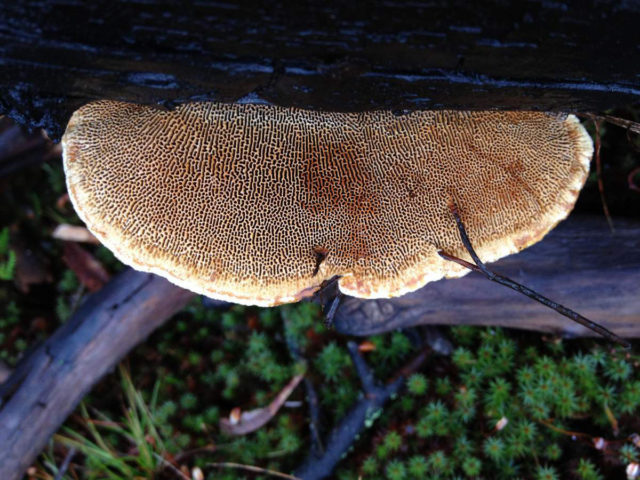
Gleophyllum oblong is an annual mushroom, but sometimes it can overwinter
Where and how it grows
This species settles on stumps, deadwood of coniferous trees, preferring trunks without bark. As an exception, it can be found on oak or poplar. He loves well-lit glades, and often settles in clearings and woodlands that have suffered from a fire, and also occurs near a human dwelling.
This mushroom grows mostly singly. On the territory of Russia, it can be found in Karelia, Siberia and the Far East. There were also single finds in the Leningrad region.
It is also found in:
- North America;
- Finland;
- Norway;
- Sweden;
- Mongolia.
Is the mushroom edible or not
This mushroom is considered inedible. It is prohibited to eat it fresh and processed.
Doubles and their differences
In appearance, oblong gleophyllum can be confused with other mushrooms. Therefore, in order to be able to distinguish twins, it is necessary to know their characteristic features.
Log gleophyllum. Its distinctive feature is the soft surface of the cap and the smaller pores of the hymenophore. The twin is also inedible. The fruit body has a prostrate sessile shape. In addition, individual specimens often grow together. There is an edge on the surface. Color - brown with brown or gray tint.Found on different continents. The lifespan of log gleophyllum is 2-3 years. The official name is Gloeophyllum trabeum.

Log gleophyllum is a danger to wooden buildings
Fir gleophyllum. This species has a sessile open hat of brown or dark brown color. At the initial stage of growth, its surface is velvety. On the break, you can see the fibrous flesh of a red hue. This species causes gray rot, which eventually covers the entire tree. It can also settle on treated wood. The size of the mushroom does not exceed 6-8 cm in width and 1 cm in thickness. This twin is also inedible. Its official name is Gloeophyllum abietinum.
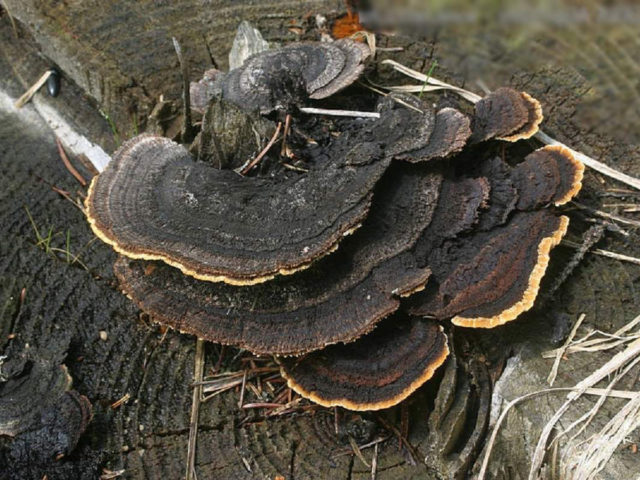
Gleophyllum fir prefers to settle on conifers
Conclusion
Gleophyllum oblong, due to its inedibility, is not of interest to mushroom pickers. But mycologists do not disregard these fruits, since their properties are not fully understood. Therefore, research in this area continues.

